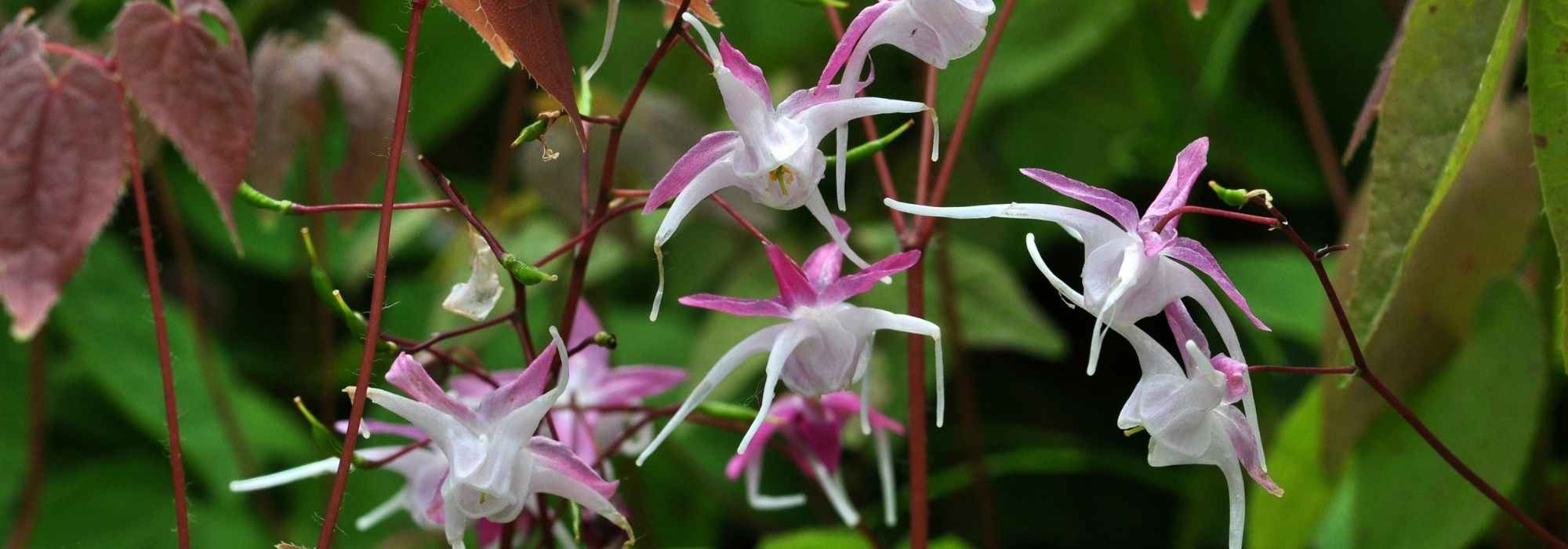
Growing a spike in a pot
Follow our tips!
Contents
The Epimedium, also known as the fairy flower, is a perennial of the woodland frequently used in garden beds. However, epimedium can also be cultivated in pots on a balcony or terrace. Whether it is deciduous like the Epimedium grandiflorum or evergreen, it beautifully enhances shaded areas with its flowers straight out of a fairy tale! Discover our guide to learn everything about planting epimedium in pots: choosing the variety, container, and compost, technical advice, and maintenance.
Which varieties of epimedium to choose?
For pot cultivation, it is better to favour species with a compact habit. The tallest elf flowers or those that tend to spread significantly are best reserved for the garden. Varieties measuring 30 to 40 cm high at most are therefore suitable. Here are some examples from our collection:
- the dwarf varieties of Epimedium youngianum measuring 30 cm in all directions, such as ‘Roseum’ with pale pink flowers, ‘Niveum’ with very elegant pure white flowers, and ‘Merlin’ with mauve-pink flowers are excellent in flowering pots to brighten up balconies and terraces;
- of the same size, the original Epimedium pinnatum ‘Black Sea’ boasts magnificent chocolate-purple foliage and displays its small yellow, pink, and orange flowers in spring;
- the epimedium ‘Lilafee’ bears small lilac-pink flowers resembling orchids and forms a clump 30 cm high and 40 cm wide;
- from April to May, the epimedium ‘Domino’ offers a white, pink, and ash-grey flowering above its spotted foliage and does not exceed 40 cm in height and 30 cm in width.
Note that these epimediums, except for ‘Domino’ which is evergreen, have deciduous foliage that disappears in winter.

Epimedium youngianum ‘Roseum’ (photo Allen C. Haskell – Flickr), Epimedium ‘Black Sea’ and Epimedium grandiflorum ‘Lilafee’ (photo PBK)
What type of pot to choose?
Choose a pre-drilled container so that watering or rainwater can drain away without risking root rot. Opt for a classic pot, a basin, or a trough at least 40 cm wide and slightly less in depth. Indeed, roots primarily develop horizontally. Prefer terracotta containers, as their porous material allows the soil to breathe better.
Discover other Epimedium - Barrenwort
View all →Available in 2 sizes
Available in 2 sizes
Available in 1 sizes
Available in 1 sizes
Available in 1 sizes
Available in 1 sizes
Available in 1 sizes
Available in 1 sizes
Available in 1 sizes
Available in 2 sizes
What substrate for potting epimedium?
Generally growing in woodlands, epimedium prefers neutral, cool, well-drained soils rich in humus. For pot planting your fairy flower, create a forest-type substrate by mixing:
- 50% well-decomposed compost or leaf mould
- 50% good quality horticultural compost, such as compost for containers and pots
- a handful of river sand to promote drainage
Read also
The 7 most beautiful EpimediumsPlanting the young plant in a pot
The Planting Period
The elf flower can, in principle, be potted at any time of the year. However, avoid periods of winter frost or intense summer drought. Indeed, early spring and early autumn are the most favourable times to encourage a gentle recovery of the plant.
Potted Planting of the Elf Flower
- For 10-15 minutes, place the pot or container of your epimedium in a bucket or basin of water to rehydrate the roots and eliminate any air pockets in the root ball;
- In the meantime, add a drainage layer at the bottom of the container about 5-8 cm thick (clay balls, gravel, terracotta shards, pumice, …);
- Fill the pot three-quarters full with your substrate mix;
- Manually create a hole and place your plant in it so that the top of the root ball is a few centimeters from the edge of the pot;
- Fill the gap around the epimedium with the remaining mix;
- Gently press down by hand and top up with substrate if necessary;
- Water generously;
- Cover with an organic mulch that has the advantage of feeding the plant as it decomposes and limiting rapid drying of the substrate.

(photos: peganum / Leonora Enking)
Where to Place the Pot?
In its natural state, epimedium is a plant that grows in forests, under trees. Its preferred exposure is therefore shade or partial shade. The sun tends to scorch its foliage, so if your balcony or terrace is south-facing, epimedium in a pot is not the plant for you. Also, consider protecting the pot from cold, drying winds.
How to care for the elf flower in a pot?
Watering
In pots, the young plant of elves requires regular watering, as it is more sensitive to drought than plants established in the ground. From March to October, the plant is in its growing period, water it once a week. In summer, during periods of intense heat, water more frequently: 2 to 3 times a week early in the morning or in the evening. In autumn and winter, limit watering during the dormant period and remove the saucer to prevent excess water, which can lead to diseases. Our advice: if possible, prefer rainwater to tap water, which is often too calcareous.
Fertilisation
Two options are available. Every year at the end of winter-beginning of spring, apply organic fertiliser on the surface, such as well-matured compost, manure, or crushed horn. You can also choose to dilute a liquid fertiliser for flowering plants in the watering water once a month.
Pruning
At the end of winter, the old foliage damaged by the cold is often unsightly. We recommend removing these leaves during March by cutting them back with pruning shears. Be careful not to damage the young flower spikes that are hidden beneath the foliage, as this could compromise flowering. This pruning facilitates the development of new leaves and inflorescences in spring. However, do not cut the foliage in autumn or early winter, as it serves as protection against frost.
Division and Repotting
Even though the epimedium grows slowly, after a few years (2 to 4 years), it may become cramped in its pot and flower less well. Its roots will then emerge through the drainage holes at the bottom of the pot. It is time to renew the substrate and divide your young plant of elves. Although division and repotting can be done in spring, it is preferable to do so after flowering, at the end of summer or early autumn, as the plant is less traumatised at this time due to its dormant period. When you unpot your epimedium, you will find that the root system forms a clump. Split the clump into several portions, each with roots and leaves. You can then immediately replant your small clumps in the ground or in new containers.
Wintering
If you live in an area with harsh winters, it is best to winter your pot. If possible, place your pot in an unheated, bright location before the onset of severe cold (garage, conservatory…). If not, you can move your epimedium closer to a wall to protect it from the wind. Add mulch, wrap the foliage in a winter cover, and insulate the container with bubble wrap, then elevate the pot using wedges so that it does not come into direct contact with the cold ground. In the warmer regions, the pot can remain outside.
Diseases and Pests
Although very resilient, the epimedium may occasionally be affected by tobacco mosaic virus. This results in leaf discoloration with the appearance of yellow or green spots. Unfortunately, there is no treatment to combat this disease. The affected plant must be burned. As for pests, you can eliminate the weevils that attack your plant using nematodes known for parasitising weevil larvae.
For further reading
- Find our entire range of epimediums on our site
- Everything you need to know about Epimedium, Flower of the Elves: planting, growing, and maintaining
- Multiply your epimedium with our tutorial: Dividing an epimedium
- Check out our tutorial to learn How to make good leaf mould?
- Visit our page on Overwintering potted plants to protect them from the cold
- Discover our sheets on How to get rid of vine weevils?
- Subscribe!
- Contents
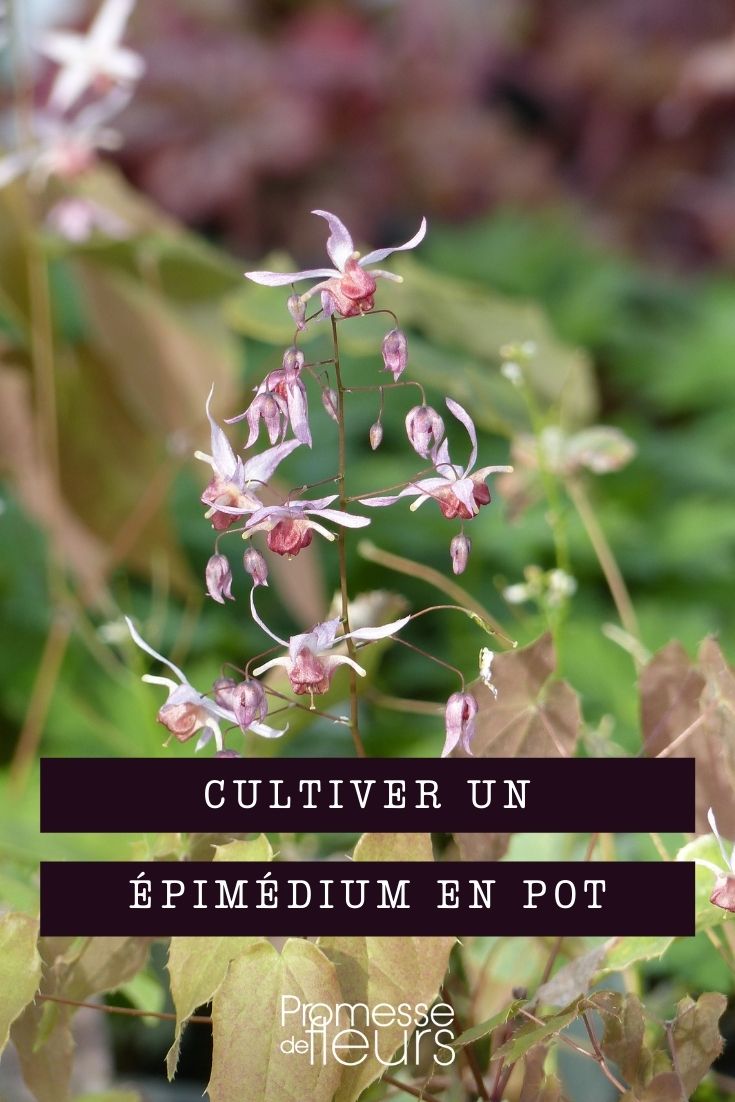































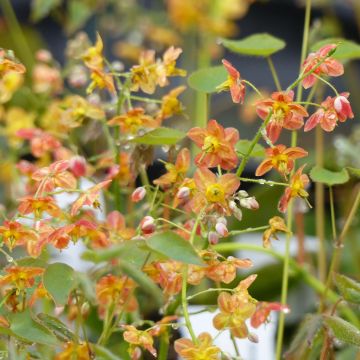
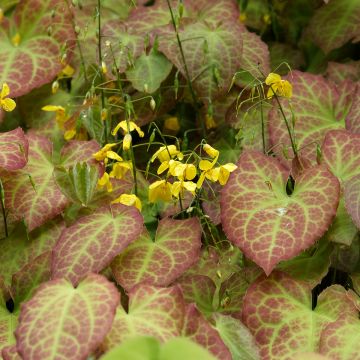
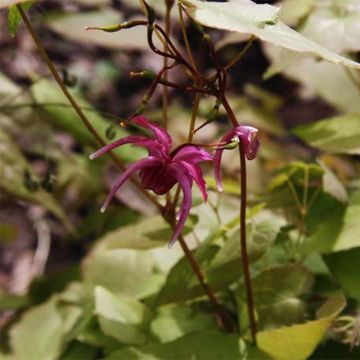
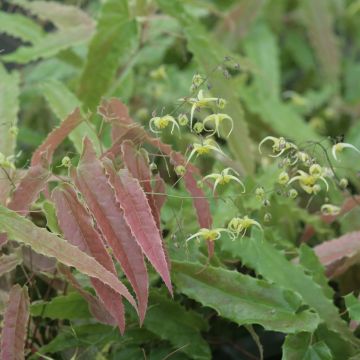
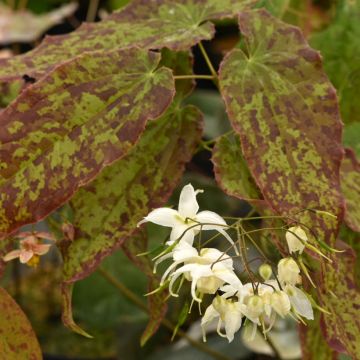

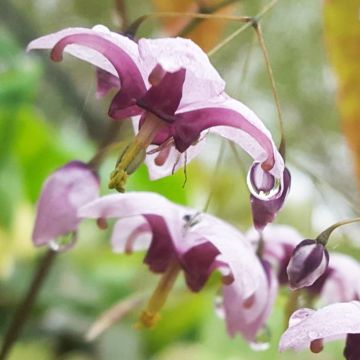
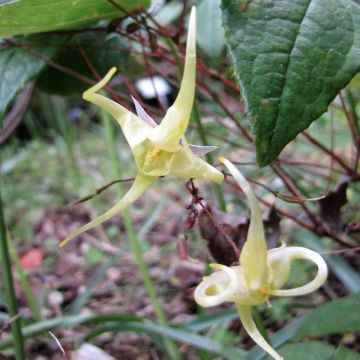
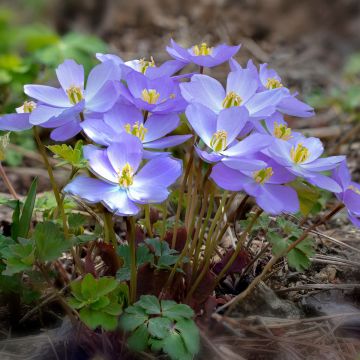
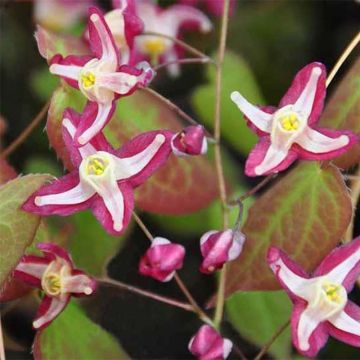
Comments